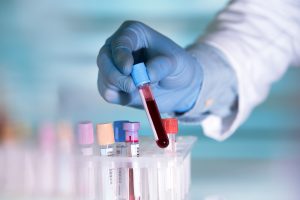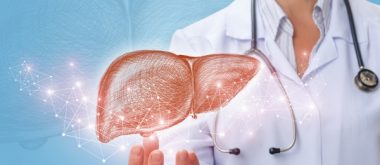Fatty liver disease often leads to chronic liver inflammation and can even lead to liver cancer. Scientists from the German Cancer Research Center (DKFZ) and the University of Tübingen have now shown in mice that intermittent fasting on a 5:2 schedule can halt this development. The fasting regime reduces the development of liver cancer in mice with pre-existing liver inflammation. The researchers identified two proteins in the liver cells that are partly responsible for the protective effect of fasting. An approved drug can partially mimic this effect.
The most common chronic liver disease is non-alcoholic fatty liver disease. It can have serious consequences: If left untreated, it can lead to liver inflammation (metabolic dysfunction-associated steatohepatitis, MASH), liver cirrhosis and even liver cancer. Fatty liver disease is widely regarded as a direct consequence of obesity. Not only have people in Europe and the USA gained an enormous amount of weight in recent decades, obesity is also becoming increasingly widespread in emerging countries such as India and China. As a result, the number of cases of liver failure and liver cancer is rising sharply in the countries affected. Intermittent fasting has already been proven in several studies to be an effective means of reducing weight and alleviating certain metabolic disorders.
Intermittent Fasting as Protection Against Liver Disease
Heikenwälder’s team has now tested in mice whether this approach can also protect the liver from fatty degeneration and chronic inflammation. To this end, the animals were fed a high-sugar and high-fat diet that corresponds to the typical Western diet. One group of mice had constant access to the food. As expected, these animals gained weight and body fat and developed chronic liver inflammation. The mice in the other group were given nothing to eat on two days a week (5:2 intermittent fasting, or 5:2 IF for short), but were allowed to eat as much as they wanted on the other days. Despite the high-calorie diet, these animals did not gain weight, showed fewer signs of liver disease and had lower levels of biomarkers that indicate liver damage. In short, they were resistant to the development of MASH.
Interestingly, resistance to the development of fatty liver was independent of total calorie intake, as the animals replenished the lost rations immediately after the end of the fasting periods. When experimenting with different variants of intermittent fasting, it was found that several parameters determine the protection against liver inflammation: The number and duration of fasting cycles play a role, as does the start of the fasting phase. A 5:2 nutritional pattern works better than a 6:1 nutritional pattern, 24-hour fasting phases better than 12-hour fasting phases. A particularly unhealthy diet requires more frequent fasting cycles.
Heikenwälder’s team now wanted to find out the molecular background of the fasting response. To this end, the researchers compared the protein composition, metabolic pathways and gene activity in the liver of fasting and non-fasting mice. This revealed two main players responsible for the protective fasting response: the transcription factor PPARα and the enzyme PCK1. The two molecular players work together to increase the breakdown of fatty acids and gluconeogenesis and inhibit the accumulation of fats. The fasting cycles lead to profound metabolic changes, which in their entirety act as beneficial detoxification mechanisms and help to combat MASH.
The fact that these connections are not just a mouse phenomenon was shown when tissue samples from MASH patients were examined: Here, too, the researchers found the same molecular pattern with reduced PPAR α and PCK1. Are PPAR α and PCK1 actually responsible for the beneficial effects of fasting? When both proteins were genetically switched off simultaneously in the liver cells of the mice, intermittent fasting was unable to prevent either chronic inflammation or fibrosis.
The drug pemafibrate mimics the effect of PPARα in the cell. Can the substance also mimic the protective effect of fasting? The researchers investigated this question in mice. Pemafibrate triggered some of the favorable metabolic changes observed during 5:2 fasting. However, it could only partially mimic the protective effect of fasting.
Better Blood Values and Less Liver Cancer
While the researchers initially focused on the effects of intermittent fasting on the prevention of MASH, they then investigated whether the 5:2 diet can also alleviate existing chronic liver inflammation. To this end, the team studied mice that had developed MASH after being fed a high-sugar, high-fat diet for months. After a further four months of intermittent 5:2 fasting (on the same diet), these animals were compared with the non-fasting control group. The fasting mice had better blood values, less fatty liver and liver inflammation and above all: they developed less liver cancer and had fewer foci of cancer in the liver.
According to the researchers, this shows that 5:2 intermittent fasting has great potential – both in the prevention of MASH and liver cancer and in the treatment of existing chronic liver inflammation. The promising results justify studies in patients to find out whether intermittent fasting also protects against chronic liver inflammation, as well as in the mouse model. The 5:2 fasting cure is popular. It is considered comparatively easy to integrate into everyday life, as the fasting days can be tailored to personal needs and no specific foods are prohibited. However, as there will always be people who “cannot stick to a strict diet in the long term”, the researchers want to investigate which drug combinations can be used to fully mimic the protective effects of fasting.
Mouse Experiments Necessary for Detailed Research
A high-calorie, unbalanced diet and a sedentary lifestyle are contributing to the sharp increase in the proportion of obese people in many parts of the world. Obesity also increases the risk of a whole range of secondary diseases in those affected, including cardiovascular disease, metabolic diseases, cancer and joint problems. Understanding these correlations and ideally intervening in a targeted manner is an extremely important research goal.
Several organs and organ systems are jointly involved in the development of the health consequences of obesity. The liver, pancreas, brain, lymphatic organs and fatty tissue work together here, which cannot be simulated in the culture dish. The intestine can also play a role in the development of MASH. The spontaneous development of liver cancer from a fatty liver can therefore only be recapitulated and investigated in the interplay of all these factors.
The influence of immune cells, which migrate from the periphery of the body into the fatty liver, are activated there and then migrate back into the body, where they interact with the fatty tissue, is also crucial. This can only be investigated in an intact organism. Experiments with mice are also necessary to understand which length of fasting periods achieves the most favorable health outcomes in relation to the circadian (day-night) rhythm.







